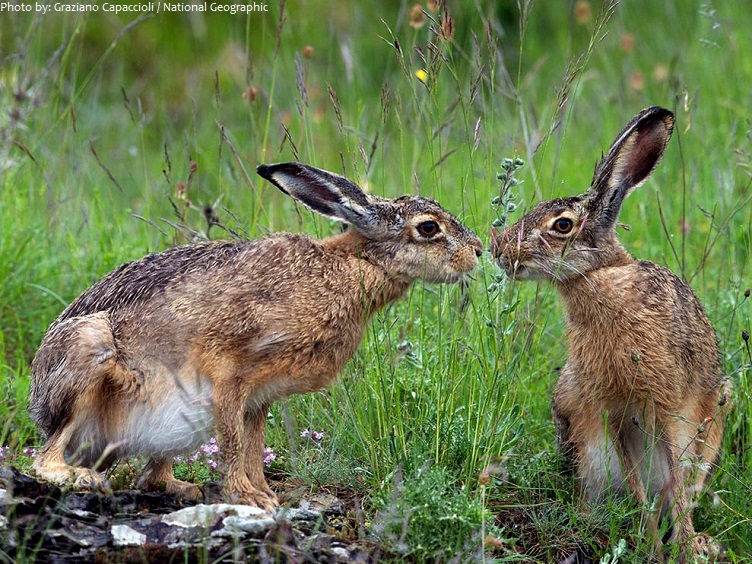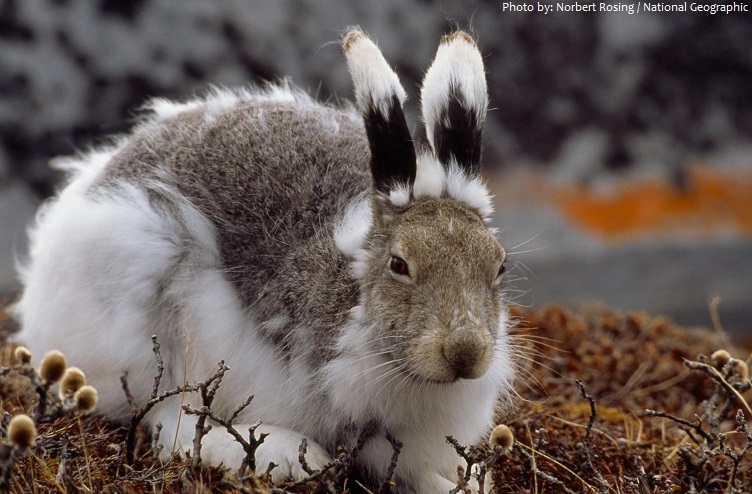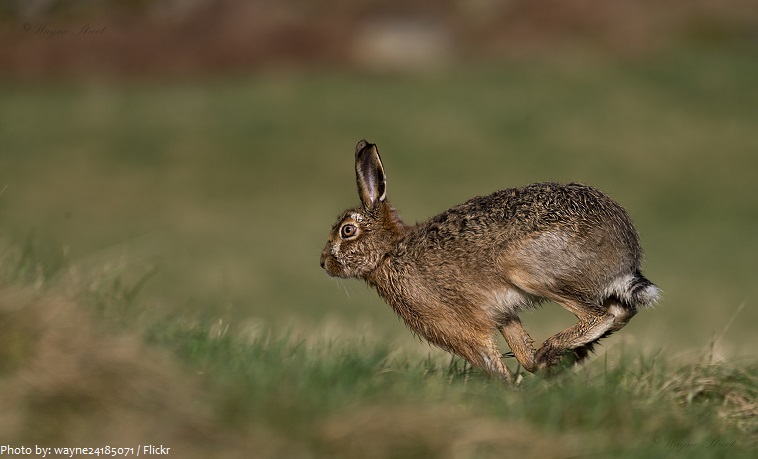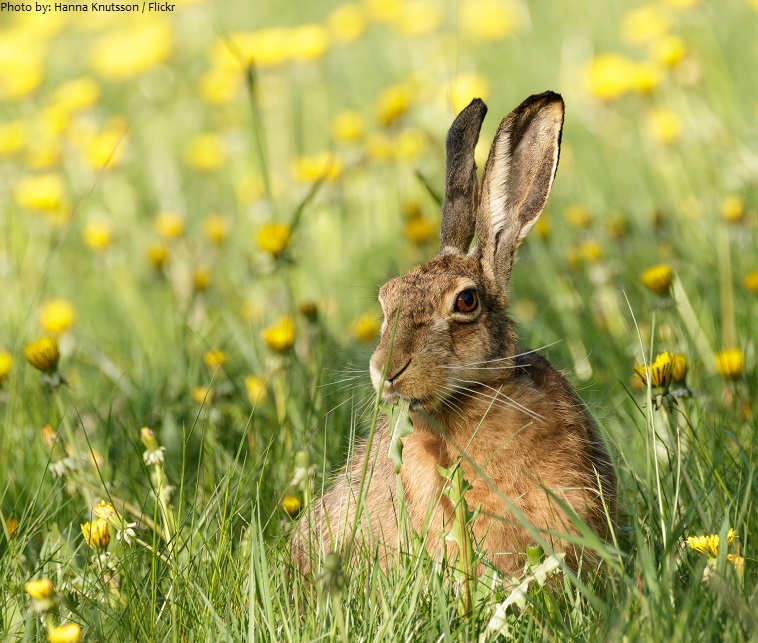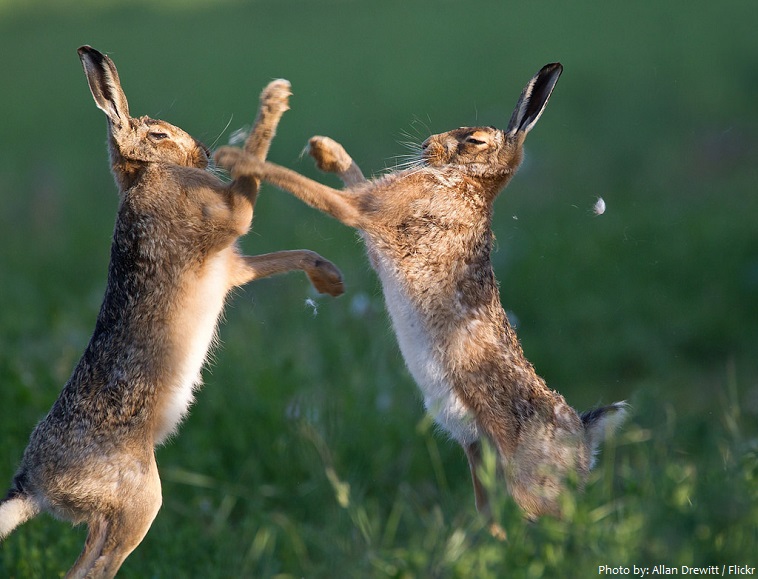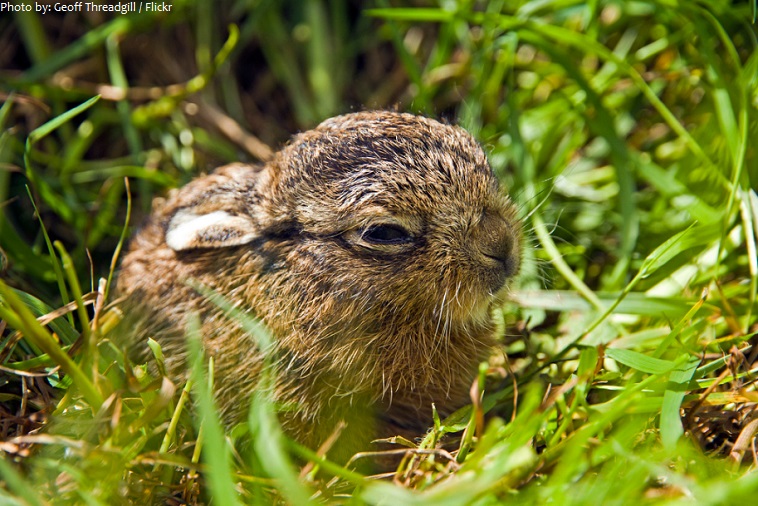Hares are small mammals related to rabbits and belonging to the same family (Leporidae).
There are 32 species of hare.
Hare species are native to Africa, Eurasia, North America, and the Japanese archipelago.
They are found all over the world, except Antarctica.
The favorite habitat of the hare is in meadows, fields and clearings.
Hares usually live from 4 to 8 years in the wild. But they can live for as long as twelve years.
If you think hares are the same as rabbits you’re “jumping” to the wrong conclusion. There are significant differences in physical appearance, behavior, and even lifestyles.
Hares are born with fur and are larger than rabbits. They usually have taller hind legs and longer ears. Rabbits make their homes in burrows underground, while hares make nests above ground.
Its head and body length can range from 40 to 75 cm (16 to 30 in) with a tail length of 3.9 to 11 cm (1.5 to 4.3 in). The body mass is typically between 1.4 and 5 kg (3 and 11 lb).
The hare’s elongated ears range from 6.2 to 11.0 cm (2.4 to 4.3 in) from the notch to tip.
Coat color can be brown, grey, tan, white and black.
Some hares, such as the snowshoe hare (Lepus americanus) and southern populations of the Arctic hare (Lepus arcticus), change color with the seasons. In the winter, these animals have white fur to blend in with the snow; after the spring moult, the fur is replaced with a shorter grey-brown fur.
Hares are quite solitary whereas rabbits are social animals.
Hares are nocturnal, feeding and travelling most at night, and sleeping during the day.
They use shallow resting hollows in fields or long grass called “forms”.
To avoid detection hares move close to the ground and their ears lie flat on their backs.
These speedy animals are capable of reaching 70 kilometers (43 miles) an hour.
They have powerful hind legs that can propel them on leaps of more than 3 meters (10 feet) .
Hares are also excellent swimmers.
Their upper lips are split, concealing a pair of long, front incisors that never stop growing. Hares must keep their teeth ground down by constant gnawing and chewing.
Hares are herbivorous and prefer to eat grass and other plant life but also supplement their diets with fruits, vegetables, seeds, nuts and some fungi.
Hares have an excellent sense of smell, hearing and vision. They have nearly 360° panoramic vision, allowing them to detect predators from all directions. They can see everything behind them and only have a small blind-spot in front of their nose.
A male hare is called a jack, a female is a jill. A hare less than one year old is called a leveret. The collective noun for a group of hares is a “drove”.
Normally shy animals, hares change their behavior in spring, when they can be seen in broad daylight chasing one another around meadows; this appears to be competition between males to attain dominance (and hence more acces to breeding females).
During this spring frenzy hares can be seen “boxing.” This is usually not competition between males, but a female hitting a male, either to show she is not yet ready to mate or as a test of his determination.
After a while, she will stop “boxing” and allow the male to be her mate.
The gestation period is about 42 days and a female gives birth anywhere from 1 to 8 leverets at a time; a female can bear three litters a year.
The female nests in a depression on the surface of the ground rather than in a burrow, and the young are active as soon as they are born.
Young hares are adapted to the lack of physical protection, relative to that afforded by a burrow, by being born fully furred and with eyes open. They are hence precocial, and are able to fend for
themselves soon after birth. By contrast, the related rabbits having young that are born blind and hairless.
Due to the size and speed of the hare, the hare is generally not a first choice meal for many predators although there are a number of animals that will hunt hares. The predators of the hare include large birds of prey, foxes, coyotes, wolves, lynx, wild dogs and weasels, and also humans who will often hunt hares both to eat and for pest control.
Hares have not been domesticated, while rabbits are raised for food and kept as house pets.
Hares have 48 chromosomes while rabbits have 44.
In Europe, the hare has been a symbol of sex and fertility since at least Ancient Greece. The Greeks associated it with the gods Dionysus, Aphrodite and Artemis as well as with satyrs and cupids.
In European tradition, the hare also symbolises the two qualities of swiftness and timidity.
The hare in African folk tales is a trickster; some of the stories about the hare were retold among African slaves in America, and are the basis of the Br’er Rabbit stories.
The hare appears in English folklore in the saying “as mad as a March hare” and in the legend of the White Hare that alternatively tells of a witch who takes the form of a white hare and goes out looking for prey at night or of the spirit of a broken-hearted maiden who cannot rest and who haunts her unfaithful lover.

